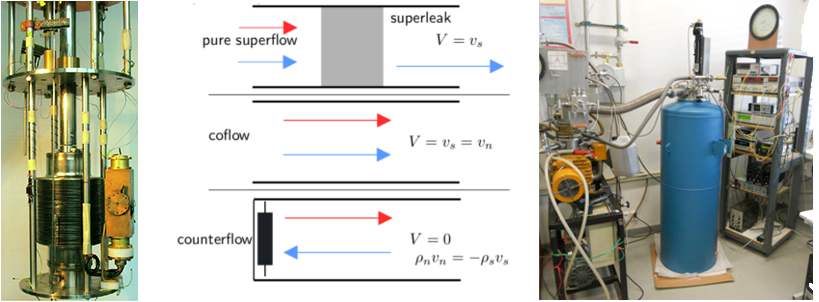
Using a powerful, yet simple, experimental method of second-sound attenuation we study flows of superfluid 4He (He-II) in ducts. Second-sound, an undamped wave of temperature or entropy, or, equivalently, anti-phase oscillation of normal and superfluid component in superfluid helium is strongly scattered on the cores of quantized vortices. This scattering causes attenuation of a coherent wave passing through the medium and thus provides us with a method of measurement of vortex line density – the total length of quantized vortex lines per unit volume.
Experimentally, the channel which contains the turbulent flow under study also acts as a second-sound resonator. The attenuation of the second-sound is monitored through the resonant response of the channel and is then converted to vortex line density. The amplitude of oscillations, where the damping of the second-sound is the strongest, assumes different position inside the channel for different modes, thus a spatial information about the vortex tangle can be obtained as well.

A versatile brass channel can be used to construct three different flows. In pure superflow and thermal counterflow, the normal and superfluid components are forced to flow with different mean velocities. In coflow, both components flow together. In pure superflow and coflow a helium-filled low temperature edge-welded bellows is used as a flow source.
The experiments are conducted in a commercial bath cryostat by Precision Cryogenics which can keep liquid helium for nearly a week. Using a fully-automated computer-controlled measurement system we are able to run the experiment 24 hours a day, interrupted only by occasional helium transfer.
